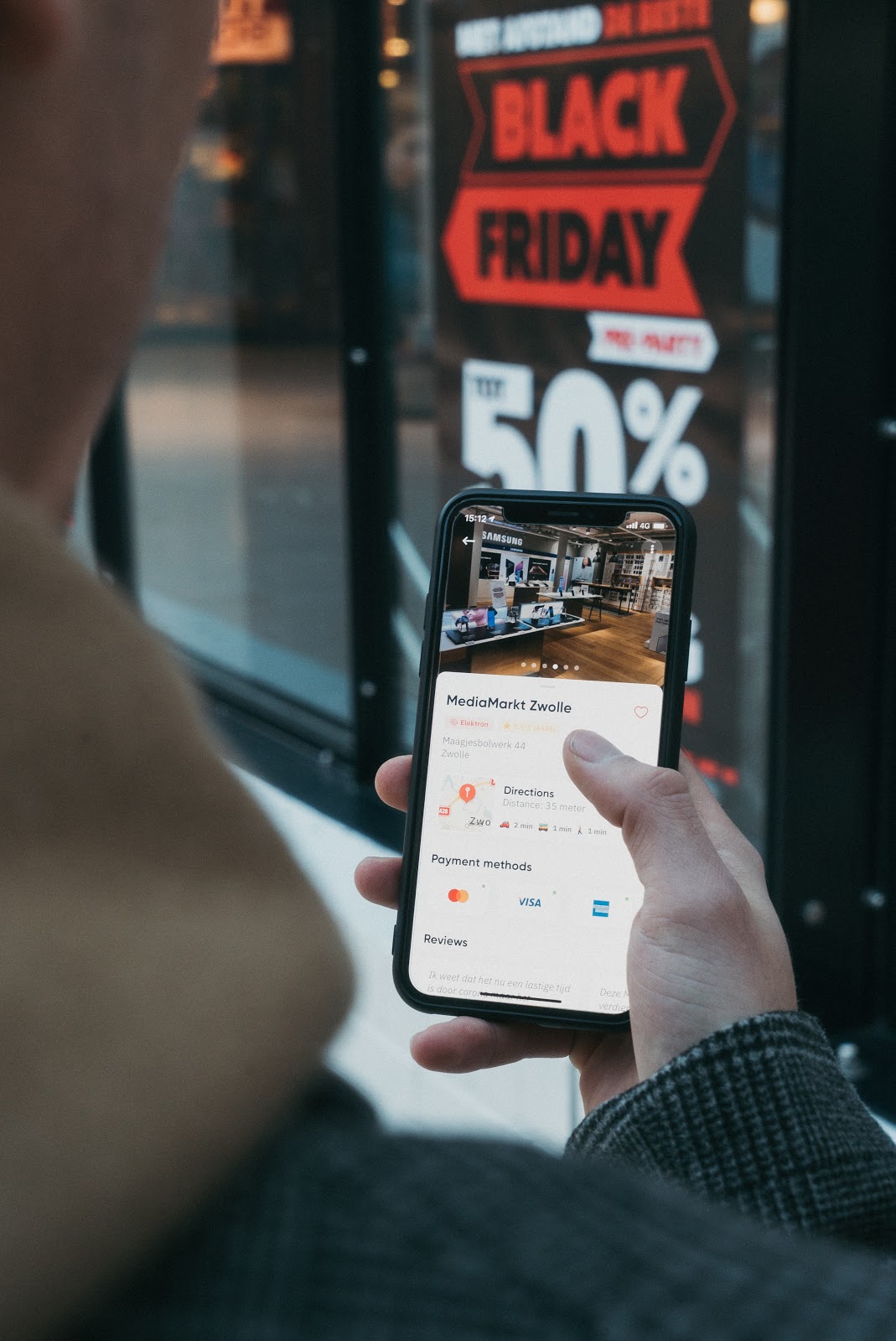Imagine you run a bakery in a place like, say, Michigan. You use the best materials, have created your own recipes with unique twists, and personalize all your orders. Your existing customers love you and are repeat buyers.
You now want to increase your reach. What are the options available to you to advertise your business?
Will you print a couple of hundred flyers and paste them at random spots? What are the chances of reaching people who will actually be interested in a cake the moment they see your flyer? Minimal, right?
Instead, if you have a fast, beautifully designed mobile-friendly website listed on Google. Do you know what can happen?
A person in Michigan who is craving for a cake might think to themselves, “Let’s see what options are there.” They will probably take out their phone and Google.
And, viola! If your site is ranked higher in the local searches, you just got a potential customer. They are already interested so all you have to do is make your website and offers appealing!
Two things are worth understanding here –
- When people are in a moment of need (say craving for cakes, looking for a tool, etc), they turn to internet.
- People reflexively turn to a device that is most handy, generally a mobile phone.
These moments of need are called micro-moments.
What are Micro-moments?
Micro-moments are moments which occur when people reflexively turn to a device to act on a need. They can be of the following types:
- To-know-something: Exploring but not ready to purchase, yet.
- To-do-something: Help in completing a task or making it easier.
- To-go-somewhere: Looking to buy the product from a nearby store; exploring nearby options.
- To-buy-something: In purchase-mode, but confused about final decision.

Google defines micro-moments as intent-rich moments when decisions are made and preferences shaped.
It is important to capture these moments for success of any online business.
When and where do micro-moments occur?
The best thing about micro-moments is that they can occur anywhere and anytime. So, if you are in reach at the moment, you will find it easy to acquire new customers.
People consult their smartphones multiple times during a day, at different places, to drive their decision-making. For example:
- In a store, buyers may consult their phone to compare prices, check information/reviews, etc.
- In a train/while travelling, users can go online to explore accommodation, tourism spots, etc.
- With friends, when making plans.
- When reading a book.
- When seeing a TV advertisement!
And, many more small instances throughout the day when we turn to our mobiles to satisfy our need of information.
Informative content > Brand loyalty
Google found that 51% of smartphone users have purchased from a company/brand other than the one they intended to because the information provided was useful.
Seventy-three percent of consumers say that regularly giving useful information in their advertising is the most important attribute when selecting a brand.
So, it is clear that the easiest way to outshine your competition and beat long-standing players in the market is through useful, informative content for your audience.
Educational content is the best form of online engagement because it does not force a sell. For example, if you are selling RO water purifiers, you could have a couple of blogs on your website why water purification is needed in homes (pollutants at source, rust in pipes, etc), what is RO (Reverse Osmosis), and what benefits it offers. Instead of blasting their screen with loud ads which put them on alert.
Similarly, if you have an online product like a course or e-book about a certain topic. It makes sense to put out a lot of valuable information on your blog for FREE. So, that potential customers can get a taste of what kind of value you provide.
Don’t you think potential consumers will be more likely to trust you because you taught them something?
If they trust you as a source of useful information, they are more likely to buy from you. It is also very logical. If you want to be successful, you have to be useful. The whole idea of content around micro-moments is best summarized in this line:
Be there. And, be useful.
I use the same method for my e-book on marketing which is full of practical insights and tactics for getting higher sales and building an online audience. I provide highly valuable content for FREE and if viewers like what they see, they can opt in for exclusive lessons that I have shared only in my e-book. It is easily visible on my website and fills a particular need very well (good, well-researched, easy to follow marketing advice).
Educational videos work the best in this regard because they are better at engaging people.
The best content for different micro-moments:
I-want-to-know-moments.
Make sure your informational content is easy to find. That includes having your blogs, FAQs, video tutorials, etc easily accessible. Anticipate possible user questions and answer them before-hand.
I-want-to-go-moments.
In these people are looking for local businesses for fulfillment of their needs – like a local gym, nearby bakery, toy-shop, etc. So, while you advertise, keep this local audience in your mind. Can you make location specific offers? Is it easy for online visitors to find your store offline – address, timings, services, etc.
I-want-to-do-moments.
These generally happen when users are stuck in a problem and want a product or information to solve it. Educational content like tutorials, blogs, video courses, etc go a long way in winning potential customers in these micro-moments. Your website should be mobile optimized because a lot of times people will refer their mobile phone on the side while troubleshooting.
I-want-to-buy-moments.
The potential customer is ready to make a purchase but might be confused about the final choice. Win them over through relevant informational content, appealing offers, and upsells. Testimonials, catchy product descriptions, etc help a lot here.
Case Studies
(Source)
Booking.com
To compete with big players like Expedia, Booking.com effectively utilized travel micro-moments by providing in-depth and information rich responses to visitor queries – converting them into customers.
They built a special team to understand Americans’ travel micro-moments and then deliver on those needs through open communication with customers. As a result, they saw a 27% increase in bookings annually.
CVS Health
CVS realized the potential of online micro-moments in health. They found out common problems people were facing in their to-do- micro-moments and built tools to simplify those processes like a mobile app that tells patients when their medication is ready to be picked up.
Final Words
I hope you now realize the power of micro-moments in shaping customer preferences and know how to utilize them effectively.
Remember, with micro-moments, you can target your advertising to be much more efficient by asking yourself when (day/night) and where (location) a micro-moment can occur.
You can anticipate customer queries and hesitations and overcome them through useful information. This can go a long way in reaching potential buyers in their moment of need and providing them useful information/products, resulting in a purchase.
For more such insights and highly practical digital marketing advice, please check out my new e-book.

